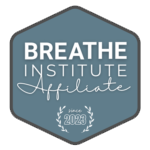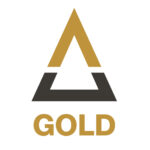
 San Francisco, Marin, and Oakland, CA
San Francisco, Marin, and Oakland, CA
Do you know what an orofacial myofunctional disorder is? This phrase is more than just a mouthful to say; it also is used to refer to a classification of issues that relate to any dysfunction affecting the mouth, tongue, or musculature of the orofacial system. An orofacial myofunctional disorder, or OMD for short, can have a major impact on your oral health and your life. It can affect the way you eat, speak, breathe, and much more. Luckily, help is at hand. Many dental practices operating at the forefront of dentistry now offer myofunctional therapy, such as Glen Park Dental in San Francisco, which has been proven helpful in treating OMDs.
How does myofunctional therapy work?
Think of myofunctional therapy as a way to re-train your orofacial system, which consists of the tongue, and the musculature of the face and mouth. Every person is unique, but a course of myofunctional therapy usually takes about six months to produce a successful outcome. The exercises themselves are determined on a case-by-case basis. Generally speaking, myofunctional therapy exercises are simple and can be performed without substantial discomfort.
Myofunctional therapy has a track record of success in treating OMDs, which manifest a wide range of symptoms that may include difficulties with behaviors such as breathing, chewing, or swallowing. An OMD also could be the cause of a speech impediment or diminished speech development, as well as the formation of negative oral habits such as thumb sucking and tongue thrust. This type of therapy also has been successful in treating temporomandibular joint disorder and even sleep apnea. Your dentist in San Francisco also may prescribe a course of myofunctional therapy following a frenectomy to remove a tongue-tie or lip-tie, particularly to restore normal function or correct any negative habits that developed as adaptations to the lack of range of motion in the tongue or lip.
Myofunctional therapy also can help to achieve or restore ideal oral resting posture. This means that, when you are not eating or speaking, your orofacial system should be at rest with lips closed, teeth closed, and the tongue resting gently against the roof of the mouth. Maintaining optimum oral resting posture has several benefits, including nasal breathing and the development of wider dental arches and an open airway.
How do I know if myofunctional therapy is right for me?
This is determined on a case-by-case basis, as evaluated by our certified myofunctional therapist in San Francisco. Generally speaking, patients are considered a good candidate for myofunctional therapy if they suffer from an OMD, have just had a frenectomy, or have been recommended a course of this therapy prior to or during orthodontic treatment.
Myofunctional Therapy in the Bay Area
Glen Park Dental is proud to have members of our team with the experience and knowledge to provide myofunctional therapy to our patients in Oakland, Marin, and San Francisco, California. If you would like to learn more about this therapy and its advantages, give us a call at (415) 585-1500 to schedule a consultation.


